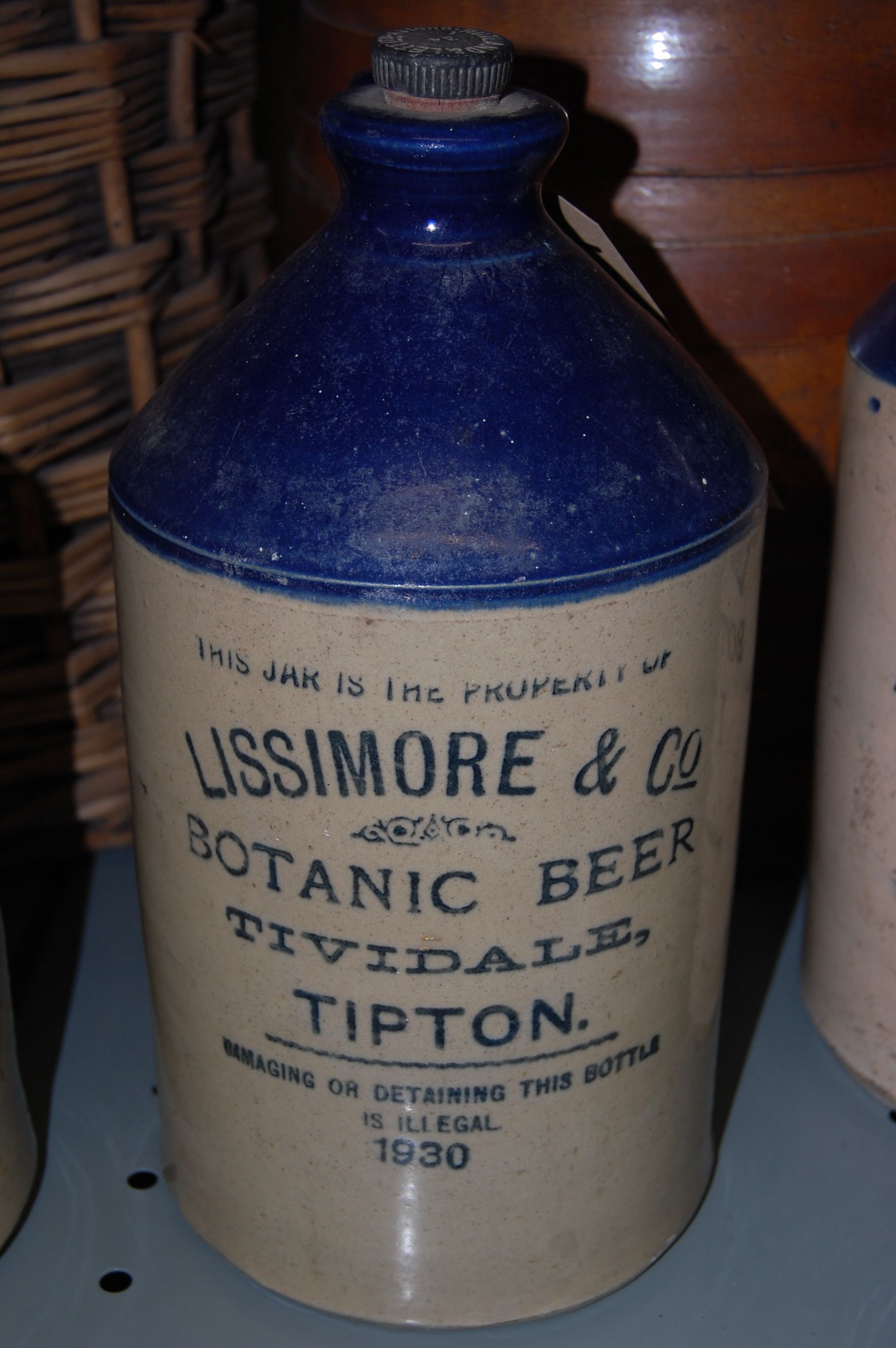|
2004–05 West Midlands (Regional) League
The 2004–05 West Midlands (Regional) League season was the 105th in the history of the West Midlands (Regional) League, an English association football competition for semi-professional and amateur teams based in the West Midlands county, Shropshire, Herefordshire, Worcestershire and southern Staffordshire. It has three divisions, the highest of which is the Premier Division, which sits at step 6 of the National League System, or the tenth level of the overall English football league system. Premier Division The Premier Division featured 18 clubs which competed in the division last season, along with three new clubs: * Goodrich, promoted from Division One North * Gornal Athletic, promoted from Division One South * Pelsall Villa, relegated from the Midland Football Alliance The Midland Football Alliance was an English association football league for semi-professional teams. It covered Leicestershire, Shropshire, Staffordshire, Warwickshire, West Midlands, Worcestershire and a ... [...More Info...] [...Related Items...] OR: [Wikipedia] [Google] [Baidu] |
West Midlands (Regional) League
The West Midlands (Regional) League is an English association football competition for semi-professional and amateur teams based in the West Midlands county, Shropshire, Worcestershire, southern Staffordshire and northern Herefordshire. It has two divisions, the highest of which is Division One, a regional feeder for the National League System (NLS) at the eleventh level of the overall English football league system. The league was formed in 1889 as the Birmingham & District League to cater for teams in Birmingham and the surrounding area, but soon became established as one of the strongest leagues outside the Football League itself, with teams from as far afield as Bristol and Wales taking part. After the Second World War it absorbed the rival Birmingham Combination to become firmly established as the leading league in the area, but a gradual decline in its status began in the late 1950s and it now operates at a much lower level than in its heyday. The league acts as a feeder t ... [...More Info...] [...Related Items...] OR: [Wikipedia] [Google] [Baidu] |
Shawbury United F
Shawbury is a village and civil parish in the English county of Shropshire. The village is northeast of the town of Shrewsbury, northwest of Telford and northwest of London. The village straddles the A53 between Shrewsbury and Market Drayton. The nearest railway station is at Yorton on the Welsh Marches Line for Shrewsbury/Crewe. The 2011 census recorded a population of 2,872 for the entire civil parish of Shawbury. History Shawbury has an entry in the Domesday Book of 1085. In the great book Shawbury is recorded by the name ''Sawesberie''. The main landholders was Gerard from Earl Roger of Shrewsbury. The survey also mentions that there is a church and a mill. Geography The River Roden flows through the village. The village of Moreton Corbet, with its castle, is just to the north. The main weather station for Shropshire is located in the village, at the RAF base. On 13 December 1981 a temperature of -25.2 °C was recorded, one of the coldest on record for Engl ... [...More Info...] [...Related Items...] OR: [Wikipedia] [Google] [Baidu] |
Wednesfield F
Wednesfield is a town and historic village in the City of Wolverhampton, West Midlands, England, It is east-northeast of Wolverhampton city centre and about from Birmingham and is part of the West Midlands conurbation. It was historically within the county of Staffordshire. Its name comes from the Old English ''Wōdnesfeld'' meaning ''Woden's Field'', open land belonging to, or holy to, the high god of the Germanic Pantheon. It is reported by the English Dialectal Society in the publication "A Glossary of dialectal place-nomenclature" available on-line in the Internet Archive of The University of Toronto Library, that the place name "Wednesfield" is pronounced by the local populace as "Wencefield". Local areas include Ashmore Park and Wood End. There is also a formal garden at Wednesfield Park. Geography Wednesfield lies at (52.5998°, −2.0827°), and is located to the northeast of Wolverhampton city centre on the northern fringe of the West Midlands conurbation. It ... [...More Info...] [...Related Items...] OR: [Wikipedia] [Google] [Baidu] |
Brierley Hill & Withymoor F
Brierley () is a village and former civil parish in the Metropolitan Borough of Barnsley in South Yorkshire, England. The civil parish was abolished in 2016. The settlement is tightly clustered and green buffered on a modest escarpment close to the border with West Yorkshire, it is almost wholly in population south of the A628 road, and is less than to the south west of Hemsworth. Its late nineteenth century founded civil parish contained the pit village of Grimethorpe, and at the 2001 census had a population of 5,973, increasing to 7,267 in the 2011 Census. Brierley is at its core approximately above sea level on gently undulating slopes. History Brierley was an early Saxon settlement. The fort at Brierley Gap, mistakenly called Saxon, is from a much earlier period, probably the Iron Age. The village grew first around the hilltop on the Barnsley to Pontefract road where a small hollow and the sites of several wells provided a good building area. Along Ket Hill Lane, coal ... [...More Info...] [...Related Items...] OR: [Wikipedia] [Google] [Baidu] |
Tividale F
Tividale is a district of the Metropolitan Borough of Sandwell, West Midlands. It straddles the borders of the towns of Dudley, Tipton, Oldbury. History Tividale Park has been known as Derygate (Deer Gate) Park; it can be traced back as far as 1327 when Tividale was known as Derickton Cross. Tividale was largely developed from the mid 19th century around the main road from Oldbury and Dudley, on the border of Dudley and Tipton. Coal mining and stone quarrying increased and canals were built across the area, and Tividale became a centre for industries such as iron and brick manufacture, and several terraced streets were built between Tividale Road and Tipton Road, as well as new houses being built along both of these roads. Rattlechain Brickworks were opened in the 1890s on a site near Sedgley Road East, in the shadow of the New Main Line Canal which links Wolverhampton with Birmingham. Quarrying of land next to the brickworks led to a section of the Main Line Canal int ... [...More Info...] [...Related Items...] OR: [Wikipedia] [Google] [Baidu] |
Smethwick Rangers F
Smethwick () is an industrial town in Sandwell, West Midlands, England. It lies west of Birmingham city centre. Historically it was in Staffordshire. In 2019, the ward of Smethwick had an estimated population of 15,246, while the wider built-up area subdivision has a population of 53,653. History It was suggested that the name Smethwick meant "smiths' place of work", but a more recent interpretation has suggested the name means "the settlement on the smooth land". Smethwick was recorded in the Domesday Book as ''Smedeuuich'', the ''d'' in this spelling being the Anglo-Saxon letter eth. Until the end of the 18th century it was an outlying hamlet of the south Staffordshire village of Harborne. Harborne became part of the county borough of Birmingham and thus transferred from Staffordshire to Warwickshire in 1891, leaving Smethwick in the County of Staffordshire. The world's oldest working engine, the Smethwick Engine, made by Boulton & Watt, originally stood near Bri ... [...More Info...] [...Related Items...] OR: [Wikipedia] [Google] [Baidu] |
Kington Town F
Kington may refer to: Places England * Kington, Herefordshire * Kington, historical name of Kineton, Warwickshire ** Kington Hundred * Kington, Worcestershire * Kington Magna, Dorset * Kington Langley, Wiltshire * Kington St Michael, Wiltshire * West Kington, Wiltshire People * Kington (surname) See also * Kingston (other) Kingston may refer to: Places * List of places called Kingston, including the five most populated: ** Kingston, Jamaica ** Kingston upon Hull, England ** City of Kingston, Victoria, Australia ** Kingston, Ontario, Canada ** Kingston upon Thames, ... * Kinston (other) {{disambig, geo ... [...More Info...] [...Related Items...] OR: [Wikipedia] [Google] [Baidu] |
Dudley Town F
Dudley is a large market town and administrative centre in the county of West Midlands, England, southeast of Wolverhampton and northwest of Birmingham. Historically an exclave of Worcestershire, the town is the administrative centre of the Metropolitan Borough of Dudley; in 2011 it had a population of 79,379. The Metropolitan Borough, which includes the towns of Stourbridge and Halesowen, had a population of 312,900. In 2014 the borough council named Dudley as the capital of the Black Country. Originally a market town, Dudley was one of the birthplaces of the Industrial Revolution and grew into an industrial centre in the 19th century with its iron, coal, and limestone industries before their decline and the relocation of its commercial centre to the nearby Merry Hill Shopping Centre in the 1980s. Tourist attractions include Dudley Zoo and Castle, the 12th century priory ruins, and the Black Country Living Museum. History Early history Dudley has a history dating back ... [...More Info...] [...Related Items...] OR: [Wikipedia] [Google] [Baidu] |
Wolverhampton Casuals F
Wolverhampton () is a City status in the United Kingdom, city, metropolitan borough and administrative centre in the West Midlands (county), West Midlands, England. The population size has increased by 5.7%, from around 249,500 in 2011 United Kingdom census, 2011 to 263,700 in 2021. People from the city are called "Wulfrunians". Historic counties of England, Historically part of Staffordshire, the city grew initially as a market town specialising in the wool trade. In the Industrial Revolution, it became a major centre for coal mining, steel production, lock making, and the manufacture of cars and motorcycles. The economy of the city is still based on engineering, including a large aerospace industry, as well as the Tertiary sector of the economy, service sector. Toponym The city is named after Wulfrun, who founded the town in 985, from the Old English, Anglo-Saxon ''Wulfrūnehēantūn'' ("Wulfrūn's high or principal enclosure or farm"). Before the Norman Conquest, the area' ... [...More Info...] [...Related Items...] OR: [Wikipedia] [Google] [Baidu] |
Lye Town F
A lye is a metal hydroxide traditionally obtained by leaching wood ashes, or a strong alkali which is highly soluble in water producing caustic basic solutions. "Lye" most commonly refers to sodium hydroxide (NaOH), but historically has been used for potassium hydroxide (KOH). Today, lye is commercially manufactured using a membrane cell chloralkali process. It is supplied in various forms such as flakes, pellets, microbeads, coarse powder or a solution. Lye has traditionally been used as a major ingredient in soapmaking. Etymology The English word has cognates in all Germanic languages, and originally designated a bath or hot spring. Uses Food Lyes are used to cure many types of food, including the traditional Nordic lutefisk, olives (making them less bitter), canned mandarin oranges, hominy, lye rolls, century eggs, pretzels, and bagels. They are also used as a tenderizer in the crust of baked Cantonese moon cakes, in "zongzi" ( glutinous rice dumplings wrapped i ... [...More Info...] [...Related Items...] OR: [Wikipedia] [Google] [Baidu] |
Bromyard Town F
Bromyard is a town in Herefordshire, England, in the valley of the River Frome, Herefordshire, River Frome. It lies near the county border with Worcestershire on the A44 road, A44 between Leominster and Worcester, England, Worcester. Bromyard has a number of traditional half-timbered buildings, including some of the pubs, and the parish church is Normans, Norman. For centuries, there was a thriving livestock market. The town is twinned with Athis-de-l'Orne, Normandy. History Bromyard is mentioned in Cuthwulf (bishop of Hereford), Bishop Cuthwulf's charter of c. 840. Cudwulf established a ''monasterium'' at ''Bromgeard'' behind a 'thorny enclosure' with the permission of Beorhtwulf of Mercia, King Behrtwulf, King of the Mercians. Ealdorman Aelfstan, the local magnate, was granted between 500 and 600 acres of land for a ''villa'' beside the River Frome. The settlement in the Plegelgate Hundred was allocated 30 hides for 'the gap [in the forest] where the deer play.' The count ... [...More Info...] [...Related Items...] OR: [Wikipedia] [Google] [Baidu] |







